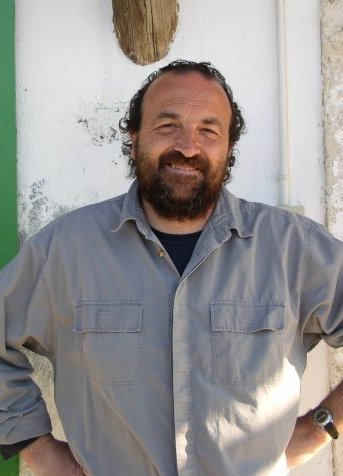
Jean-Laurent Lucchesi
Executive Director of The Friends of the Marshes of Vigueirat Association.
The Friends of the Marshes of Vigueirat Association has been coordinating the Cassaïre project since it was started. Jean-Laurent Lucchesi, who is the Executive Director of this association, offers us his vision of this project, and how he feels about its future development.
Could you remind us how the Cassaïre project came into being, as well as its initial objectives ?
There was already the idea in the mid 1990s of developing hunting activities on land with low biological value in the area around the Mas Thibert hamlet near Arles; however, this project never took off. Ten years later, The Friends of the Marshes of Vigueirat Association seized the opportunity offered by the LIFE Promise local land development project, along with the initial reflections on the Mas Thibert’s ten year sustainable development plan (P3D), to revive the project.
Luckily, right at that moment there was an opportunity to purchase 70 hectares of agricultural land on the Cassaïre site, formerly used to grow rice and to graze livestock, which were acquired by the French Coastal Protection Agency (CdL) in 2006. At this moment, two ideas emerged at the same time for the ecological rehabilitation of this former farm land, and to develop hunting activities for the members of the Mas Thibert hunting society.
A steering committee was later created to group together hunters as well as other stakeholders involved in this project, including The Friends of the Marshes of Vigueirat Association, which served as the coordinating unit, the CdL, Tour du Valat, government officials, ONCFS, CNRS, and the Camargue Regional Natural Park. As required by the CdL, a “baseline state” of the site was first established by the Tour du Valat, which came up with a project to create a 35 hectare marsh area.
The project has taken shape with the first works conducted in 2012 under the authority of the The Friends of the Marshes of Vigueirat Association, a thesis, focussing on the scientific monitoring of the project, was started at the Tour du Valat in November 2010, and hunting activities began in September 2012.
To sum things up, there were two initial objectives for the Cassaïre project: to develop hunting activities for local stakeholders, and to restore a natural area that is characteristic of the Camargue on farm land that has been abandoned and is of low biological interest.
What were the principal constraints and obstacles encountered during this process?
There were never really any major constraints, due to the fact that from the outset there had been real dialogue with all the local stakeholders. On the other hand, we did encounter some obstacles during the implementation phases, linked to the differing perceptions of those who used the area: some farmers were unfavourable to transforming back into marshes land that had been drained for the purposes of farming, whereas for others the idea of rehabilitating an ecological site to develop hunting activities there was perceived negatively. And, of course, we had to find the financial means to achieve a project that was on the whole rather costly.
Did local government officials support the initiative ?
Overall, the project was warmly welcomed by local officials. As far as Arles is concerned, government officials supported it implicitly by authorising the CdL to purchase the Cassaïre site in 2006, and by participating in all of the different steps in the negotiations. The Bouches-du-Rhône General Council also provided essential support, by funding the coordination of the project from the start. Finally, the PACA regional government has committed to funding a thesis at the Tour du Valat, which will enable it to ensure scientific monitoring of the project by studying the long-term evolution of the site.
As far as the hunters are concerned, did you have to convince them of the overall pertinence of the project or only in terms of some precise points ?
The hunters were convinced the project was a good idea as of the start, since the request to do it came largely from them, and the dialogue process that entailed ten or so meetings enabled their requests to be more precisely defined. The resulting agreement was then written up into a formal convention. Today, the project is developing in a very good atmosphere at the Mas Thibert. The social relations with inhabitants there have even become essential components in this experience.
To conclude, would you say that the Cassaïre project is heading for success today ?
Today, our overall assessment of this experience is very positive! After the initial phase of work that was started in early 2012, a public survey is being carried out, which will open the way to the second phase, as long as long-term funding can be obtained. The project has an excellent reputation in the eyes of local stakeholders and government officials. In addition, the CNRS already considers it to be one of its major projects in applied research and the ecological rehabilitation of natural sites.
In the future, the question that will be raised concerns how this experience can be modelled and transposed to other Mediterranean sites, based on the ecological and scientific monitoring that will continue to be carried out by The Friends of the Marshes of Vigueirat Association in partnership with the Tour du Valat. We can say that in terms of the Camargue, this Association would appear to be easy to reproduce. The major issues would be linked to evaluating the economic cost, and ascertaining whether local officials and other stakeholders have the political will required to implement this kind of rehabilitation project.